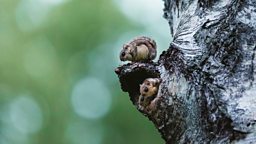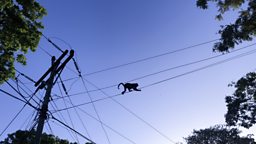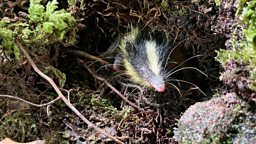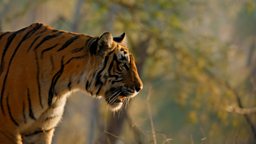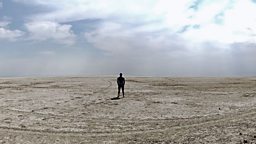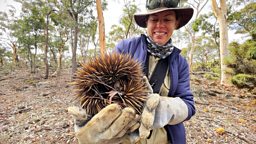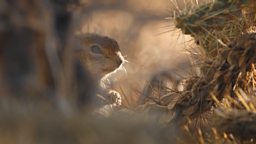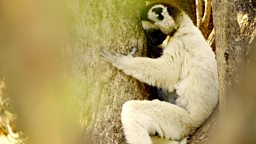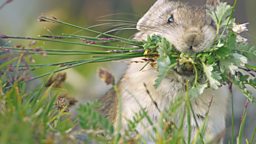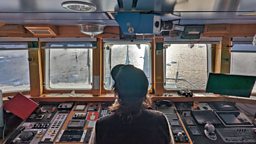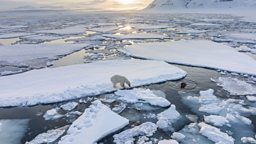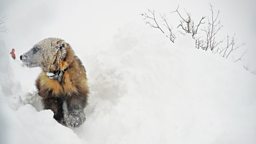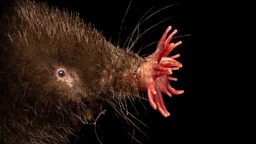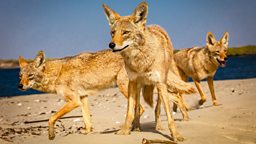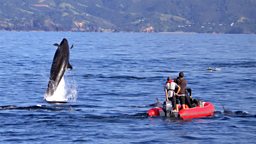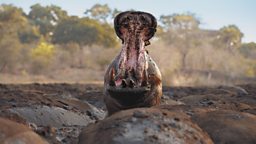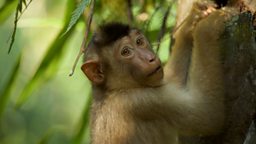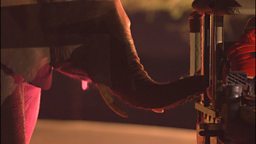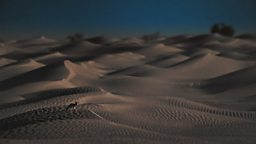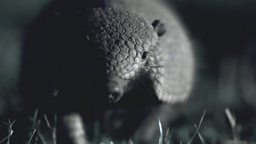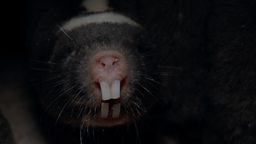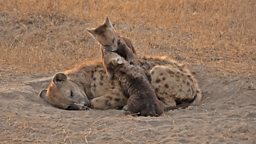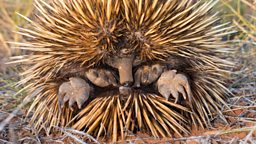Filming in the Cold
By Mammals Producer, Will Lawson

Filming in the colder parts of the world is special, it must be! Because it’s certainly not straightforward, and I keep going back there, willingly…!
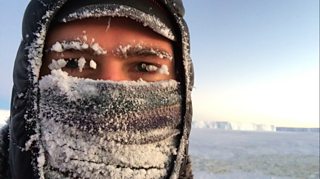
“The silence. The night skies. The wild-ness. The silence. The privilege. And of course - the challenge (and silence).” Would be my answer if you were to ask me; “why do you keep going back?” Admittedly most of the appeal is subjective, but objectively - it is challenging!
To start with, keeping kit and crew warm, safe, and effective is a constant battle in the cold and doing anything in sub-zero temperatures will likely take three times longer than in other environments. Furthermore, in higher altitudes and latitudes (where most cold environments are found) fewer people call it home; so, there’s often less infrastructure, access routes and personnel to help you, extending travel times and adding layers of logistical complexity. And that’s all before you’ve added in which new animal or behaviour, you’re hoping to film…
No doubt it sounds ridiculous to start with a challenge (filming animals in the cold) and then actively make it more difficult with your decisions to tell the story of something deemed almost impossible to film. But that’s often how wildlife filmmaking seems to begin…
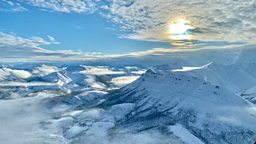
One such story on the Cold episode that presented all these challenges (and more), was that of the wolverine. Filming a wolverine (an animal some may think a comic book creation) is in many respects a ‘holy grail’ in wildlife filmmaking - as catching more than a glimpse of one is so rare! For Mammals, we wanted to do more than simply film one: we wanted to film a mother and her kits (young) emerging from their snow-den, for the first time. Something (at the time) yet to be attempted in Alaska’s northern wildernesses.
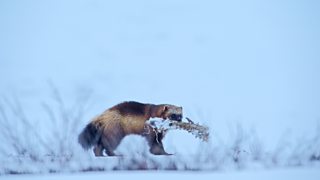
The reason they are so hard to film is, for the most part they are solitary animals, and can roam huge distances – up to 600 square miles, covering over 50 miles of that in a day. We chose northern Alaska for our ambition because, relatively speaking, it’s a wolverine stronghold and had active research on the go. It’s also a vast area of wilderness, supported for the most part by only one main road!
To stand a chance we needed the right team; so, we built a cracking one! Made up of hardy wildlife experts, top wolverine scientists, a talented film crew and a pilot, we pooled our knowledge, experience, and resources for months, to understand how the wolverines lived and moved in their tundra home. And once we felt ready, we ventured north into the wolverine’s world.
Our first filming attempt could only be described as - a steep learning curve! From the beginning we knew it would be a challenge, but once we got snow-boots on the ground, it quickly became clear just how big a challenge it was. I think all I need to say about that is – we learned A LOT!
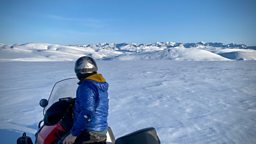
Unperturbed, and armed with a huge amount of practical experience, we returned the following year with a well-informed plan… We had come to the realisation that, to film a wolverine, we needed to use the landscape like a wolverine – reacting to new information quickly and moving over it at speed.

A combination of light aircraft and snow machine travel would be how we began; covering ground and gather data quickly, establishing wolverine travel corridors and activity hotspots (e.g. animal carcasses and tracks). The resultant evidence was followed up with camera traps (remotely triggered cameras that we put out for weeks and even months at a time). Though they often struggled in the harsh, cold weather and sometimes left us bitterly disappointed, the camera traps gave us just enough glimpses of wolverines to confirm clusters and patterns in wolverine activity.
This took several weeks and was laborious, but bit-by-bit our search area began to shrink… Until, one day while up in the air with our stella pilot and expert Mark Keech, we spotted a potential den – a hole in the snow, no more than 50cm across, with wolverine tracks leading to and from it. Not much to go on, but for the first time we had hope!
Using the field data and this find, we took a leap of faith and quickly made the decision to set-up our remote camp near the potential den - about 2 miles from the snow hole, and about 30 miles from the nearest road. Using skidoos and sledges, we dragged all the essentials we needed to live out there and eventually settled in - home for the next few weeks.
We moved cameraman Neil Anderson from our small camp to his even smaller filming hide, and he selflessly made that his base. Sat in his sleeping bag, he trained his camera through the small gap in the hide on the snow hole and waited. The rest of us placed camera traps and acted as lookouts to increase our knowledge of how the wolverine was using the area.
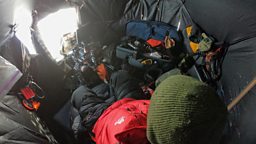
After over a week of long cold nights and even longer cold days, I heard an excited but crackled voice over the radio – Neil had news! He’d witnessed and filmed a wolverine! And not just one - a second wolverine was visiting the den – and one (presumably the male) even bringing food to it! Something we’d never even heard of in a wolverine. We were in business!
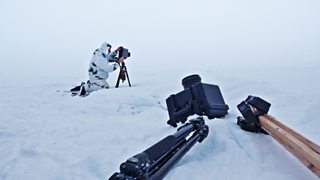
Over the following days, the sightings continued and the wolverine appeared unaware of Neil’s presence – the perfect situation! But as time passed and spring advanced, the frozen rivers and winter snows started to be replaced by running water and an expanding mosaic of brown tundra, melting through from below. Our route home on our snow machines was melting with it, and there was still no sign of kits!
With Neil focused on the den, and each day getting warmer, we headed out on a snow machine repeatedly to map our melting route home, until finally we ran out of days! If we didn’t leave now, our snow machines would be trapped for the summer, and we’d need a helicopter to get us out. To say we were bitterly disappointed would be putting it mildly – it might only be days (or even hours!) until any kits showed themselves now - but we had no way of knowing.
As a final roll of the dice, we hid several camera traps in the vicinity of the den, making sure to cause no disturbance. Once we felt we’d given ourselves the best chance of at least one camera filming the moment (if it were to happen), we slipped away.
The journey back – six hours threading our way over a landscape more tundra now than snow – at least confirmed it to be the right choice to leave. Now all we could do was wait.
Six weeks later, back in Bristol, an email let me know a package had arrived for me - my stomach lurched – I knew what it was; the cards from our abandoned camera traps had finally made it home! With fumbling hands, I inserted each card into the reader almost nauseous with trepidation. What was on the cards? A lot of blowing snow, a red fox, some ptarmigan… and just a handful of precious shots showing a wolverine kit emerging from a snow hole!! Then almost as quickly as they appeared, mother and kit trotted out of frame, never to return.
We’d done it!
Over the years, I’ve come to the realisation that, while trying to film the hardy wildlife that live in the cold parts of our planet, at the end of each shoot I’m left with a feeling of having been given a masterclass, yet again in just how ineffective we are as humans, in their chilly world. But nonetheless, we return each time, with a bit more experience and do our best to keep up!
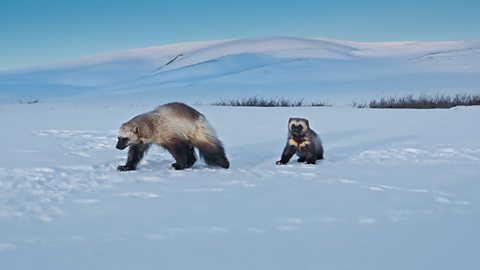
Wolverines raising their young on the Alaskan tundra
Wolverines show their caring side in the Alaskan wilderness.

